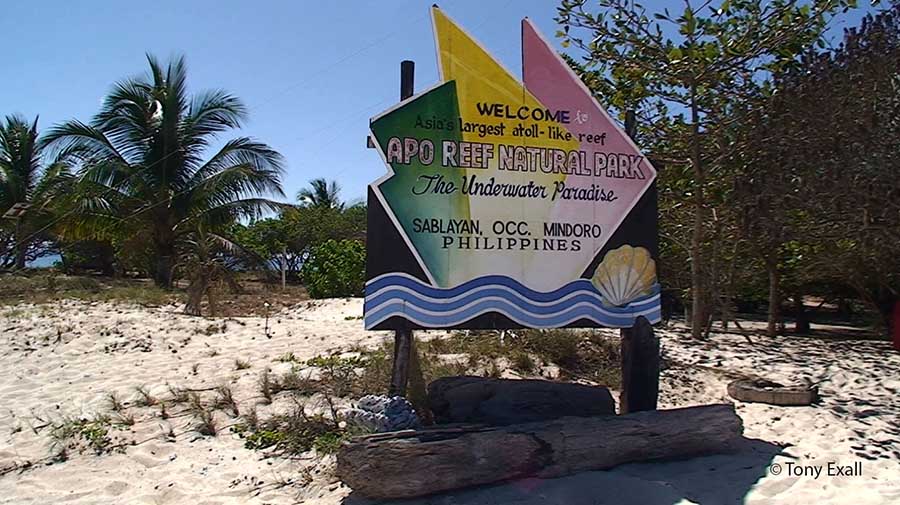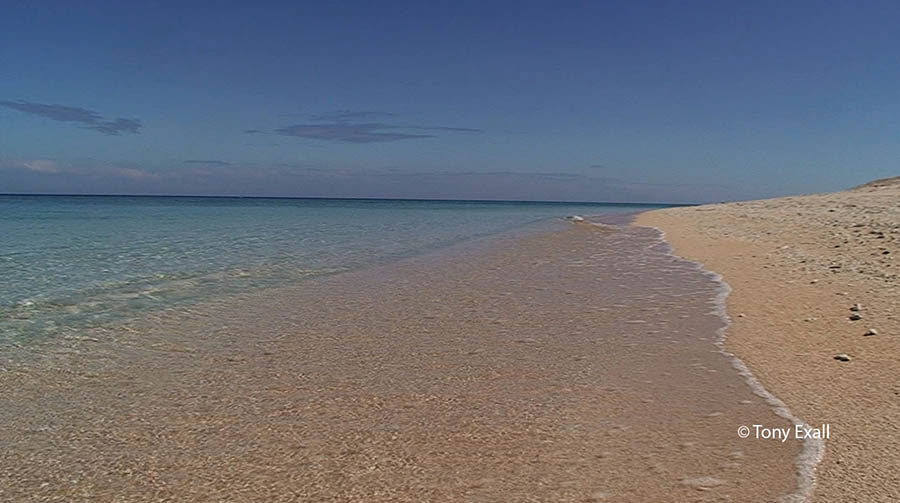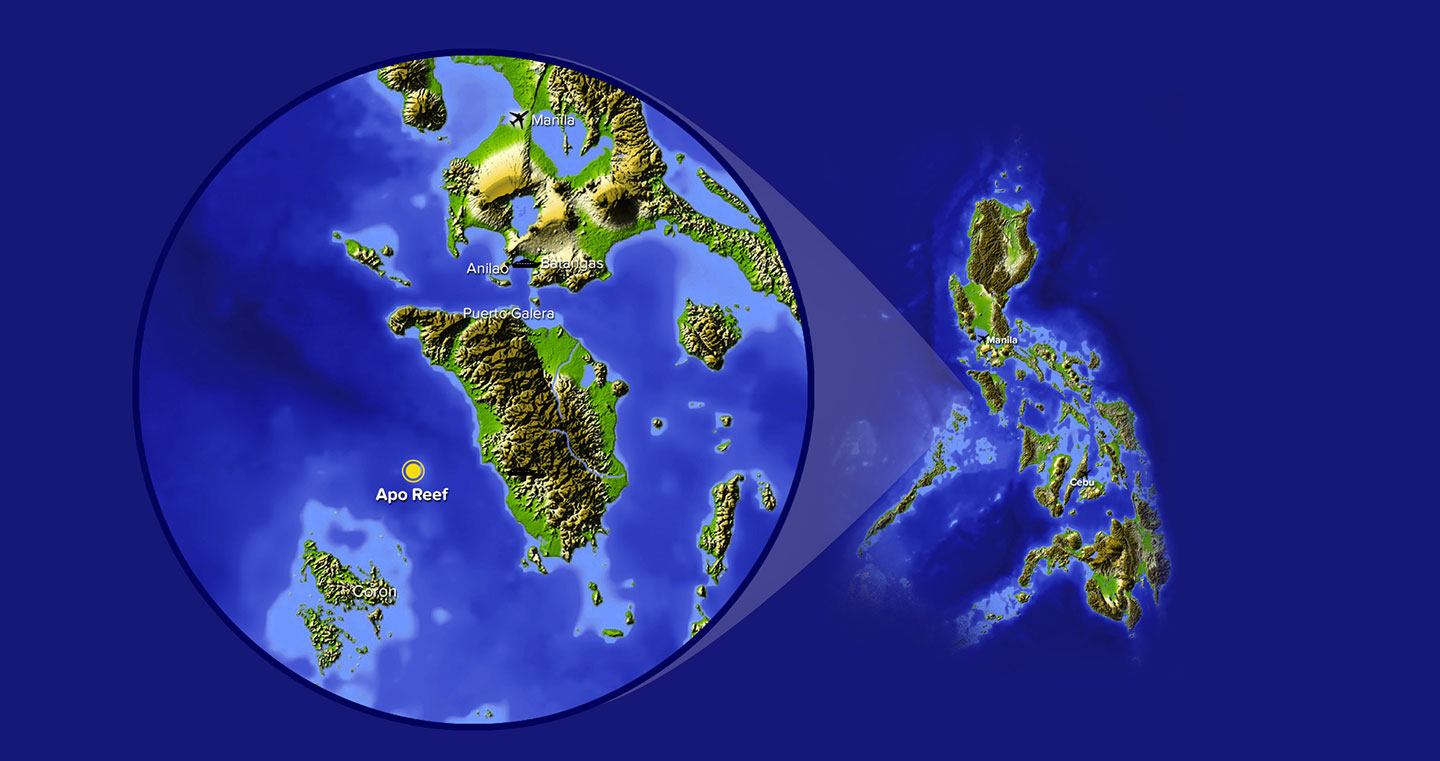A huge area reef off the west coast Mindoro offers real adventure diving to explore the walls and sunken mounds. Some of the best visibility of all Philippine dive destinations can be expected, which makes the sight of some amazing coral reefs and fish soup all the more incredible
Is the world’s 2nd largest contiguous reef after Australia’s Great Barrier Reef. The marine park stretches over some 34 square kilometres but only has 3 points that break the surface, most notably being Apo Island, Menor Island and Cayos del Bajo Island being the other two islands, which are nothing mote than rocky outcrops. It is only Apo Island that you can set foot upon, a beautiful tropical island with lagoon, lighthouse and perfect white sand beach… but you can’t stay there! There’s no accommodation and the only people that stay on the island are the Park Rangers.
Apo Reef can be dived as a day trip from North Coron and from Pandan Island, near to mainland Mindoro.
In our opinion the best way to dive Apo Reef is aboard either of the Liveaboard boats Rags Two or Discovery Fleet.
Fish soup, super viz and excellent opportunities to see mega fauna. Apo reef offers divers the chance of some of the best adventure diving in the Philippines.
Apo reef is apparently the second largest contiguous coral reef after Australia’s Great Barrier reef. It’s a very big area that can only really be explored properly by being on a live aboard. Of all the diving around Apo without doubt the best locations by far are Apo Island and the nearby Menor island.
Menor Island is nothing more than a spikey rocky outcrop with a little bit of scrub growing out of it. Underwater, the reef itself is kept in check by storms and waves byt the reef life is prolific, schools of red snapper, chevron barracuda, big eye travelly and many white tips chilling out on the substrate whilst an adult napoloean wrasse makes an appearance.
Apo Island (not to be confused with Apo island in Negros) has the most commonly visited dive sites and understandably so. The North side of the island, near to the lighthouse, is a vertical wall, descending to 60 plus meters. Its here in the cooler months of December to January that you stand a fair chance of encounters with hammers heads and gray reef sharks. On the reef top, have a look around for the Drummers cleaning station and school or oriental sweet lips that are always there – keep still and move slowly and they will allow you to get really close for that picture postcard view of their big fat lips.
The south side is where the most fish action is. Again the wall descends to 60 plus meters,,, white tips patrol the wall with massive schools of pyramid butterfly fish, fusiliers and red tooth trigger fish keeping one eye on the plankton and the other on the sharks.
The reef is in particularly good condition on the south west point with turtles crunching on the coral and blue fin trevally causing panic as they hunt.
There’s always something happening to keep your attention.









